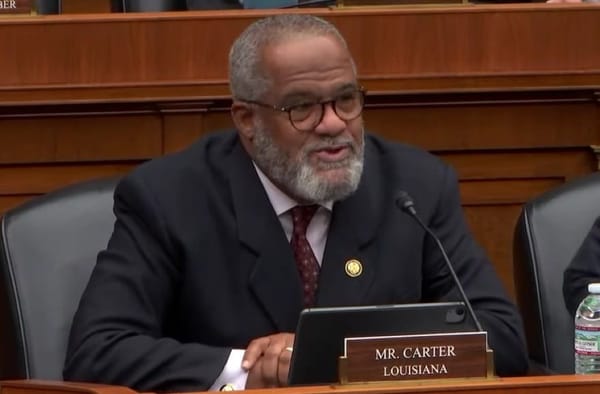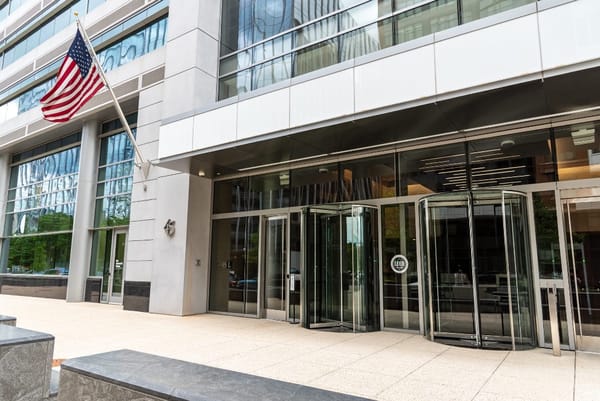FCC Hears Need for More Flexible 12 GHz Band to Support Fixed Wireless Applications
Rulemaking could unlock critical capacity in the 12.2 GHz spectrum band.
Teralyn Whipple

WASHINGTON, August 10, 2023 – Commenters urged the Federal Communications Commission to adopt its proposed rules that would open the 12.2-12.7 GHz and 12.7-13.25 GHz bands for fixed wireless broadband use.
The 5G for 12 GHz Coalition, a coalition of telecommunications industry and public interest leaders committed to policies to improve federal spectrum use, said the proposal will preserve America’s edge in the race to 5G, eliminate barriers to meeting the full potential of the 12.2 GHz band, empower an ecosystem where mid-band spectrum drives innovation and next-generation connectivity for American businesses, and “supercharges” broadband deployment by empowering new technologies without harming existing services operating in the band.
The coalition asked the FCC to “reconsider decades-old rules that have prevented the commercial incumbents from deploying next generation services in the 12.2 GHz band.”
The band is already allocated for terrestrial mobile service domestically, is only lightly used by fixed satellite and mobile service, and there is only a single federal incumbent at one site, Sweden-based telecommunications equipment maker Ericsson said in its comments, applauding the FCC for identifying bands for 5G and 6G applications. Its comments said that the 12.7 GHz band will be especially useful as a complement band.
Ericsson urged the FCC to largely adopt the proposal with changes in the technical rules that will promote more expansive and flexible use of the band. The FCC should repurpose the band for flexible, exclusive-use licenses and refrain from adopting sharing rules for the band, “which would limit the ability of licensees’ to deploy robust networks to support advanced technologies,” it said.
By repurposing this band, the U.S. and the wireless industry will be “well-positioned to take a leading role in pursuing global harmonization,” Ericsson concluded.
Fixed wireless services are often deployed in economically challenging areas as an alternative to laying cables.
Nokia also expressed its support for the proposed rules. “Continued availability of spectrum for 5G will lay the foundation for the successful evolution to 5G-advanced and 6G,” Nokia wrote. “The nation must find ways to ensure a steady supply of spectrum in different frequency ranges – low, medium and high bands. Spectrum is the lifeblood for communications services, and it also drives U.S. competitiveness.”
The 5G for 12 GHz Coalition sent a letter to the Senate Commerce Committee Chair Maria Cantwell, D-Wash., Ranking Member Ted Cruz, R-Texas, House Energy and Commerce Chair Cathy McMorris Rodgers, R-Wash., and Ranking Member Frank Pallone, D-New Jersey, expressing its interest in working with them and the FCC to “act quickly on this critical issue.”
“This rulemaking represents a significant opportunity for the Commission to modernize decades-old rules and unlock critical capacity in the 12.2 GHz spectrum band for the next generation of high powered, two-way terrestrial fixed service,” read comments by telecom trade association INCOMPAS.
It added that increased competition in mid-band spectrum will “encourage more innovation, more choices, and greater opportunities for customers, particularly those that stand to benefit in unserved and underserved communities.”
INCOMPAS added that the proceeding can represent a “win-win situation for the U.S. by accommodating satellite and terrestrial operations in the 12.2 GHz band. By allowing industry to bring its sharing technologies to this mid-band spectrum, the FCC can expand its flexible use of the band, connect more Americans to the next generation of technologies, and protect existing licensees from harmful interference.”
The Wireless Internet Service Providers Association urged the FCC in comments to enable access to the 12.2 GHz band for fixed terrestrial use on a secondary, shared basis with operations coordinated through an automated frequency coordination system to ensure incumbent licensees are protected from harmful interference.
In July, the FCC proposed rules that would make it easier for satellite service providers to get across to already-licensed mobile wireless spectrum to help on-the-ground mobile wireless companies cover dead spots they can’t reach. Commenters expressed concern that the proposed rules are “premature” and could be competitively harmful.
Earlier this month, the FCC also released an inquiry into non-federal spectrum usage, particularly how new data sources and artificial intelligence technology can aid spectrum management.









Member discussion